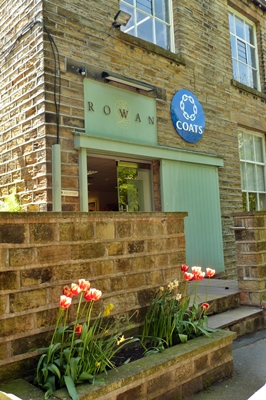 I have recently made some much-needed changes to my working life. For the past year I have been juggling an awful lot of balls and pulling some very long hours. I couldn't carry on doing that and so I had to make some tough decisions - though I tried putting off my decision for as long as I could. My hand was finally forced earlier this month when I received a very kind permanent job offer for something I had been doing on a freelance basis for a very long time. The job offer came as a bit of a surprise, but it was also a wake-up call in terms of what I wanted to do.
And so the decision was made and this week I will be waving a fond farewell to my years of working for Rowan Yarns. I have been putting out proverbial fires for them for 4.5 years and I will be saying goodbye to a lot of creative, inspiring people. I have learned a lot through my work as a consultant - both creatively and on the business side of things. I will miss a lot of people (you know who you are), but I thought it was time to hand over the reins to someone else.
I have recently made some much-needed changes to my working life. For the past year I have been juggling an awful lot of balls and pulling some very long hours. I couldn't carry on doing that and so I had to make some tough decisions - though I tried putting off my decision for as long as I could. My hand was finally forced earlier this month when I received a very kind permanent job offer for something I had been doing on a freelance basis for a very long time. The job offer came as a bit of a surprise, but it was also a wake-up call in terms of what I wanted to do.
And so the decision was made and this week I will be waving a fond farewell to my years of working for Rowan Yarns. I have been putting out proverbial fires for them for 4.5 years and I will be saying goodbye to a lot of creative, inspiring people. I have learned a lot through my work as a consultant - both creatively and on the business side of things. I will miss a lot of people (you know who you are), but I thought it was time to hand over the reins to someone else.
For the time being I will be focusing on my own work - the designing, the writing, the editing, and the teaching. I am excited about the future (plans are afoot well into 2015!) but the excitement is tempered by fear too. Did I make the right decision? What will the future bring? It's scary and exhilarating.
I have sought equilibrium by trying out some not-so-new crafts. I tried my hand at cross-stitching and embroidery back when I was a teenager, but I was never very good at it. The Anchor Thread Mill Museum has been offering classes on a range of stitching topics in connection with Paisley hosting the Great Tapestry of Scotland - and I went along to two of these classes.
 The first class was on cross-stitching and I found the rhythm quite soothing. I have tried finding some interesting cross-stitch kits online, but either they are too ambitious or insanely ambitious. The second class was on crewel work and we used the same linen and wool they had used on the Great Tapestry (Peter Greig Linen and Appleton's Crewel Wool, in case you are wondering). I was defeated by French knots but I enjoyed the freedom of expression you get with crewel work.
The first class was on cross-stitching and I found the rhythm quite soothing. I have tried finding some interesting cross-stitch kits online, but either they are too ambitious or insanely ambitious. The second class was on crewel work and we used the same linen and wool they had used on the Great Tapestry (Peter Greig Linen and Appleton's Crewel Wool, in case you are wondering). I was defeated by French knots but I enjoyed the freedom of expression you get with crewel work.
I am not a natural stitcher, but I have bought myself a hoop and I am slowly working on the Paisley sampler we were given as part of the class. It is nice to be making stuff and not needing to consider it as part of work. Although, knowing me, I'll probably incorporate free-hand embroidery at some point.
(Once I've made peace with French knots.)
Speaking of the Great Tapestry of Scotland, I am currently posting a small detail from panels on Twitter - one tiny detail per day. Most of these details are knitterly impressions but occasionally it will just be something that caught my eye. The first detail I posted was this amazing Shetland sheep just lurking in the corner of one of the early panels. Here's to the future.
Here's to the future.

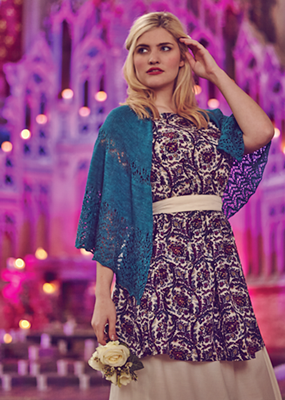 The Proserpine Shawl is my contribution to the mini-collection. It is a semi-circular shawl knitted in a stunning custom dye
The Proserpine Shawl is my contribution to the mini-collection. It is a semi-circular shawl knitted in a stunning custom dye 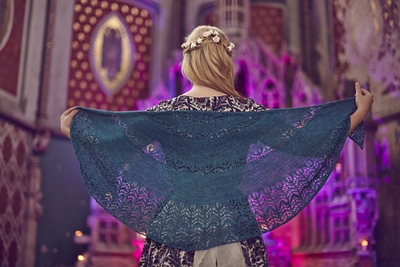
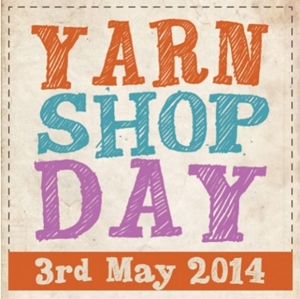
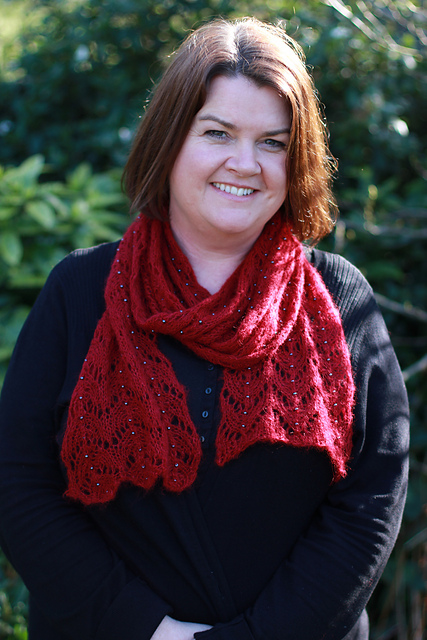

 Apparently spring has sprung but here in Glasgow, winter refuses to let go. It has been overcast, drizzly and circa 8C all this week which is why it's taken almost a week for us to photograph the Orkney cardigan (or, as I like to call it, my opus magnum).
First, a brief follow-up on
Apparently spring has sprung but here in Glasgow, winter refuses to let go. It has been overcast, drizzly and circa 8C all this week which is why it's taken almost a week for us to photograph the Orkney cardigan (or, as I like to call it, my opus magnum).
First, a brief follow-up on 
 Oh, and I completely changed the colours.
Oh, and I completely changed the colours.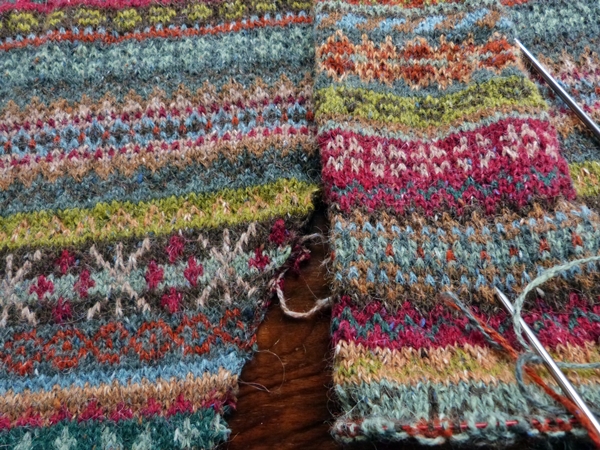 Yesterday I was working on the second sleeve of my Orkney cardigan when the following exchange happened.
Yesterday I was working on the second sleeve of my Orkney cardigan when the following exchange happened.